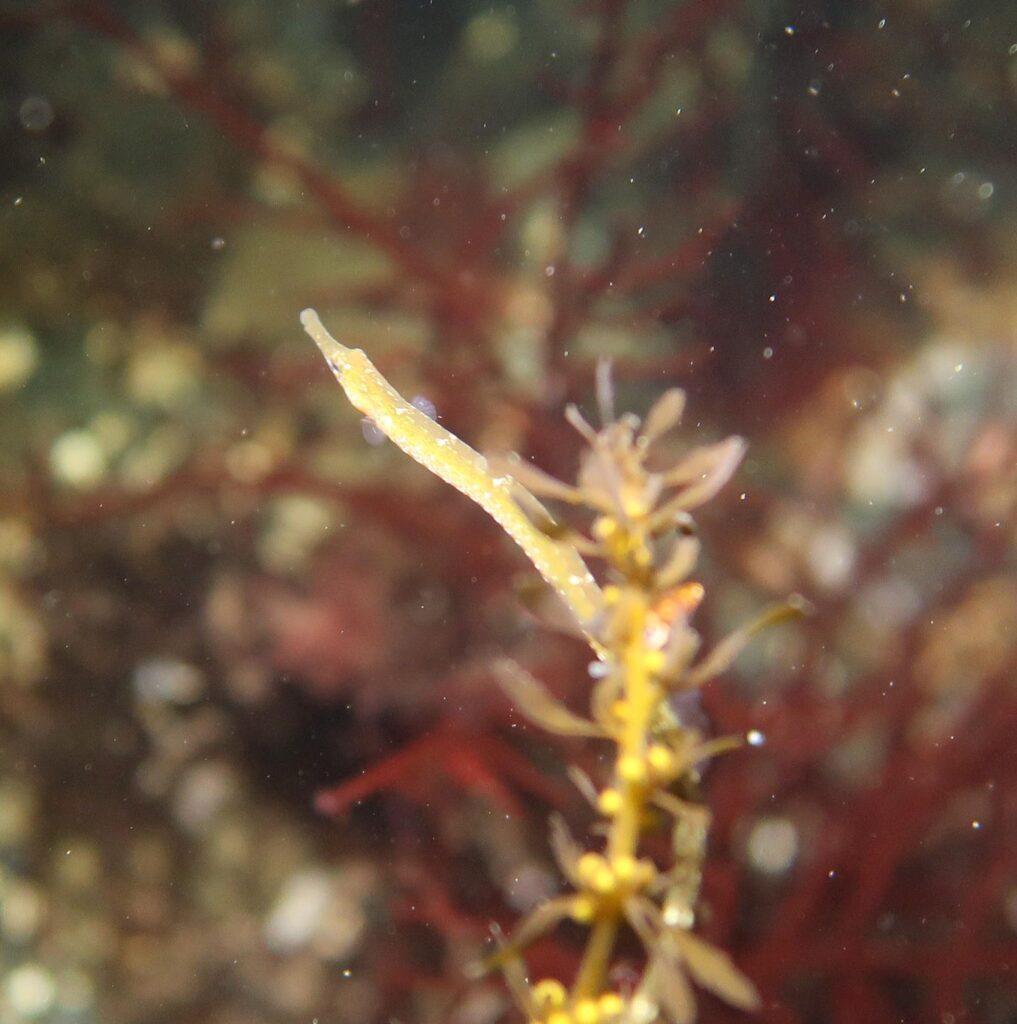Bay Pipefish (Syngnathus leptorhynchus)

Bay pipefish are a common shallow-water fish around Vancouver Island. They are found from the central Gulf of Alaska to southern Baja California. They are long, slender fish which can be up to 40 cm in length. Unlike most fish, the bay pipefish lacks pelvic fins. It only has a single dorsal and small tail fin, which are used for locomotion. These fish range from pale tan to brown in colour and are covered in boney plates, which makes them very inflexible.

As the name suggests, bay pipefish are commonly found in shallow protected bays and estuaries. They are often found among eelgrass or seaweed. Their slender, green-brown bodies mimic the appearance of eelgrass, which helps them to avoid detection by predators. They move with a vertical gliding motion, using their single dorsal fin.
Bay pipefish are a member of the family Syngnathidae, which also includes seahorses. They prey mostly on small crustaceans, fish eggs and juvenile fish. They are not many species that will eat bay pipefish, but they are prey for some species of shorebird. They can also be eaten by humans; dried pipefish is believed by some cultures to promote kidney health, and can be consumed medicinally.
To learn more, check out our Seaquaria video about bay pipefish. Bay Pipefish are a common resident in our summer touch tanks! Some other great resources are Mayne Island Conservancy & Central Coast Biodiversity.


